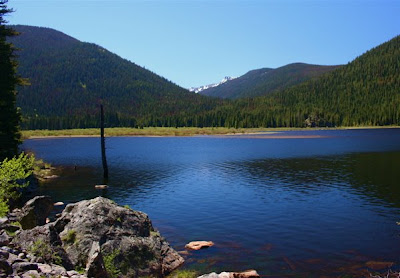Mesa Verde was occupied between AD 550 and AD 1300. That is 700 years long folks! It is hard to fathom any community lasting that long. For the first 600 years, though, the Ancient Puebloans live on top of the mesa. The climate during that period was much wetter than it is now and large swaths of the upper mesa were used to cultivate corn and other crops.
There are four major cliff dwellings that you can visit. Each requires a separate ticket, which is purchased at the visitor’s center. Getting into and out of the dwellings is easy for some and nerve racking for others. For anyone who is afraid of heights like me, some of the cliff dwellings are more an exercise in anxiety control than anything else. I will try to describe each one individually.
The Cliff Palace is the most famous dwelling. It is also the largest with 150 rooms, 75 common areas and 21 kivas. It was home for 100 to 200 people. This dwelling is only accessible via tour, so be emotionally prepared to join the herd and be led around.
The Balcony House is the one cliff dwelling that requires Valium for those afraid of heights. There is a large 20-foot ladder that you need to scale to get into the dwelling. The Rangers are quite upfront when you purchase your tickets that this ladder presents problems for some people. My friend talked me into it and the Rangers are good about talking you through. The trick is to look straight ahead at the logs of the ladder and don’t have sunscreen on your hands because the logs are slick with use. Through much Lamaze breathing, I was able to make it up. Ironically, there is a cave you have to crawl through to get to the exit and my friend is claustrophobic so I had to coax her through that section. To get back up to the top of the mesa there is a series of smaller ladders. After surviving big mamma, these ladders seemed trivial. Each one led to a nice fat ledge that I could throw my body onto. One pitch did not end in a ledge, however, but ended in a chain cut into the rock. This so disconcerted me that I raced up the rest of the way on a surge of adrenaline. I could literally feel it pumping through my veins and it was a good six hours before it was all reabsorbed. The Rangers did not warn us about that so be forewarned! It did not help either that this was the first dwelling on the tour. I was paranoid the whole day that all the others would be similar. They are not. Balcony House is the only one you have to worry about if you are a nut job like me when it comes to heights.

Long House is only open in the summer. It is located twelve miles away from the other dwellings on Wetherill Mesa. There is a nice picnic area with a shaded pavilion in this area as well. You can choose to take the tram or to walk to the dwelling. Along the way, stop at the Badger House Community. This is an excavated mesa top dwelling under a canopy. There is also an overlook for Long House, which is always nice. Seeing the dwellings with their alcoves gives them perspective. Long House was quite easy to get into and out of. Here we saw the shallow pool that demonstrated how the cliff dwellers got their water…it trickled down through the rock from the mesa above. The shallow pool looked more like a salt lick than a hot tub, so the residents were not swimming in H2O.
Spruce Tree House is the third largest dwelling. In reviewing my photos it seems that I did not take my camera with me that morning or was bored with taking pictures. Who knows? You’ll have to take my word that it too is worth walking through. There are no ladders at all for this dwelling.
On this trip to Mesa Verde, we camped in the park. The campground was practically deserted. I asked a Ranger and they said that that was typical even though it was the July 4th weekend. Because the park is on a mesa it cooled down nicely in the evenings. Durango is the nearest town to the Park but it is a long and tedious drive to get up the mesa. Camp or stay in the park at the 60’s looking retro lodge if you want to maximize your time. However you do it, everyone should experience Mesa Verde at least once in their life.




















































